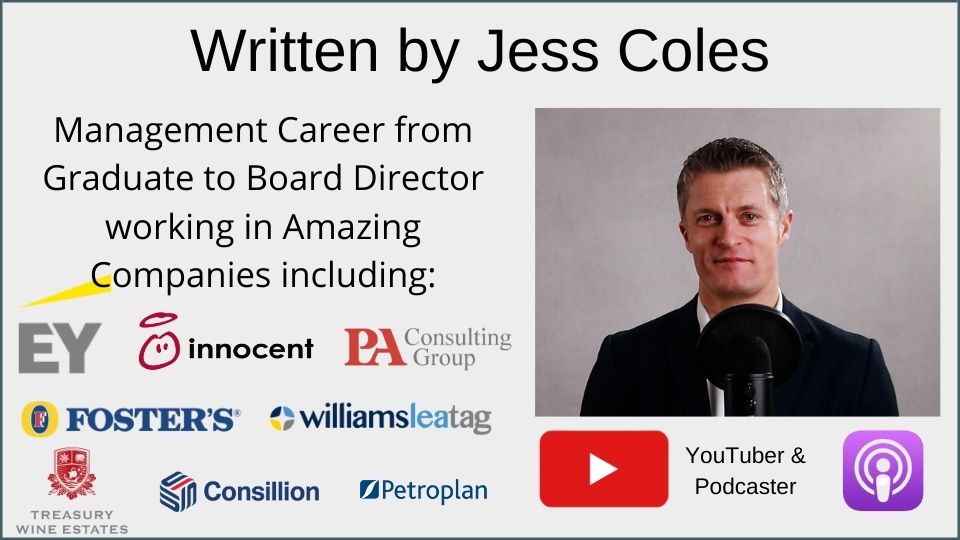5 coaching skills for leaders and managers

Developing coaching skills for leaders and managers in the workplace is fast becoming essential to succeed in our fast paced and changing world.
Using coaching skills is a great way to unearth talents and skills in your team and drive accountability and ownership. Improved individual and team performance nearly always follows.
Coaching skills – although related – are very different from training and mentoring skills. These differences make coaching skills so effective and require a different mindset from more traditional management practices.
As an introduction to coaching skills for leaders and managers we are covering 5 skills, including coaching for performance, which provides you with a framework and tips to start putting coaching skills into practice in the workplace.
This Article Covers:
- The Importance of Self-awareness
- Four Behaviours to Support Coaching Skills in the workplace
- The Power of Asking Questions
- Active Listening – the Underrated Secret Weapon
- Coaching for Performance – the GROW Model
Watch on YouTube
Listen on Podcast
Coaching skills for leaders and managers: Understanding the Importance of Self-awareness
Self-awareness is a starting point for coaching others. If you are not aware of your beliefs, your strengths, your limitations, your values, your emotions, and your reactions then how can you help others discover these very same things.
Self-awareness begins with self-knowledge i.e. knowing who we are and what we are about. Self-awareness is taking our self-knowledge and using it to monitor our thoughts, emotions, and beliefs.
Self-awareness is a skill you get better at with practice. Start by paying attention to how you feel and react in different situations.
For example – if a colleague criticises an idea of yours. What is your instant reaction? Anger, annoyance, retaliation. Being self-aware, you might recognise these immediate emotional reactions and then understand that they are criticising your idea and NOT you. This might reduce your emotional response, and you might think that you know this person and they would only be criticising if they could see a real problem with the idea and it might be good to understand what this problem is.
As we develop self-awareness, we become more confident and surer of who we are and more able to proactively manage our thoughts, behaviours, and emotions rather than being held hostage by them or managing them reactively.
Make the time to spend 5-10 minutes thinking back on events of the morning or afternoon and how you reacted to those events. Consider what beliefs, assumptions or life experiences might be driving your specific reactions to those events.
Listening to others properly, understanding their perspective and their feedback on you are really useful in building you own awareness. Look into all the different personal discovery tools available to help build your own self-awareness. Examples include Insights, StrengthFinders, personality tests and similar.
Once you become good at recognising and understanding your own reactions to situations, you can then start working on your awareness of how your beliefs and reactions effect the behaviour and emotions of others.
With better self-awareness you are in a good place to be able to start using coaching skills to successfully develop others.
Coaching skills for leaders and managers: 4 Behaviours to Support Coaching Skills in the workplace
These 4 behaviours are:
- Demonstrate genuine concern and care for your team members
- Play to the strengths of the people you are coaching
- Don’t punish failures – coach the person through their mistakes
- Make the time to celebrate success
I think it is obvious to your team members if you really care about them, their development and their wellbeing. Think back to all the managers you have had – which ones you knew cared and which ones didn’t care as much.
I knew a manager cared when they really listened to me, they took my thoughts and ideas seriously, they considered my strengths and development areas in the advice they gave, they supported me, fought for me and the team and so on.
Work on your own mindset and the behaviours you demonstrate day in day out. Doing so will make a big difference to how your team responds to you.
Next, play to your team members strengths more that trying to improve their weaknesses. You will get further improving strengths than using the same amount of time and effort to improve weaknesses. Most people find it quicker and easier to learn and improve in areas they enjoy and are good at i.e. their strengths. In today’s world, specialism and having a few things you are very good at is better than being okay at many things.
Be aware that punishing failure does not encourage learning. Punishing failure will also reduce risk taking and individuals stepping outside their comfort zones – both of which will reduce or stop any improvements.
Instead of punishment, coach the individuals through what went wrong and how they would do it differently next time. This is much more useful for learning, and you will see a lot more improvement in performance by taking this approach.
Finally, take the time to celebrate success. Celebrating success is much more motivational to team members than listing to motivational speeches from you, pep talks and similar. Positive reinforcement works and everyone likes to be complimented. Make the time to celebrate success privately and publicly.
Building coaching skills for leaders and managers: The Power of Asking Questions
As a manager or leader, asking the right questions is a brilliant skill to develop. Questions require the other person to think so they can put together an answer. Needing to speak the answer out load, further improves the thinking. Assuming you are listening properly, you can also learn a lot from those answers.
So rather than tell your team members what you know or how you would solve a problem – ask them what they think or would do. Ask their opinion. Ask them to tell you the options they can think of and their preferred solution to a given problem. Ask them why they think that is the best solution. Ask them how they will implement it.
I promise you – ask questions well and you will be bowled over by some of the answers you get. I am continually.
There are lots of different types of questions. Understand and practice how to use each.
Closed questions typically have a yes or no answer, e.g. Is John your manager? Try to avoid using these questions in most situations as you and the other person learn much less from them.
Open questions usually don’t have a set or specific answer. You can’t answer open questions with yes or no, e.g. what makes the option you have chosen the best? Try to use a lot of open questions when coaching. It can be really useful when starting to use coaching skills to plan out a range of open questions you can ask and practice using them.
Generally avoid using leading questions such as “We know that option A is a poor choice, what do you think?” or “Don’t you think…” Leading questions restrict a person’s thinking and limit ideas and are less useful in most stages of coaching.
Finally, many people associate using “Why” in a question with judgement. To avoid putting the other person on the defensive try to minimise using why in your questions. For example, rather than asking “why do you think that” you could ask “what makes you think that?” You are likely to get a more positive response without using why.
Building coaching skills for leaders and managers: Active Listening
I think listening is an Underrated Secret Weapon for managers and leaders. All the great managers I ever had were great at listening.
Active listening is a great skill to develop and I think that too few leaders and managers work at developing good active listening skills.
Actively listening is NOT for example
- nodding at the other person while thinking about what you are going to say next.
- Nor is being silent while thinking about the 8 problems you have to solve by the end of the day
- Nor is it hearing what is being said and then cutting the other person off to make a point or finishing their thoughts and sentences for them
If you are not able to repeat or summarise what the other person is talking about at any given point you are probably not actively listening. Active listening takes effort and concentration.
Some of the common traits of active listening include:
- Maintaining eye contact
- Following, taking in and understanding what is being said by the other person
- Using attentive body language to encourage the other person to continue talking
- At appropriate points, paraphrase or summarise what has been said back to other person to demonstrate you are taking in what they are saying
By actively listening to others, it encourages them to speak, and it is amazing what they will tell you. Think how many times a person truly listens to what you are saying in a given day. Probably not that many.
Actively listening is also about being observant with the tone of voice, the pace of the voice, the body language and using all the non-verbal clues to understand what the person really means with the words they say out loud. These clues are usually more important that the words themselves.
For coaching, actively listening is essential. If you don’t understand what the person is saying, or you have missed crucial points being made, how are you truly going to support their learning?
Listening is a great way to demonstrate you are interested in the other person, which is so important in building relationships.
Active listening is an essential skill in coaching so make the time to practice it.
Building coaching skills for leaders and managers: Coaching for Performance
In business, when investing in development in any form, there is an expectation that improved performance and better delivery of results is the outcome of that investment.
Most coaching programmes with external coaches will agree goals and measure progress against those goals to assess the effectiveness and value of the coaching programme. Choosing goals and working to those goals provides the coaching programme with direction and purpose.
When you are using coaching skills as a manager or a leader, I suggest you do so in relation to goals to achieve. This might be something simple like solving an immediate problem or in might be much more complex like delivering a big project.
A good framework to structure your coaching sessions with your team members is the GROW Model. The Grow model consists of 4 stages being:
- Goal Setting
- What is Reality?
- What Options do you have?
- What Will you do?
So running through each part of the Grow model quickly keeping in context our need to coach to improve performance.
1. Goal Setting
The first step of the GROW Model – Setting goals or objectives is a very good place to start. Ask the person you are coaching: Where do you want to get to? What does reaching your goal look like? How will you define your goal? What will it feel like to achieve this goal?
Coach your team member so they are clear what goals they are aiming for. Make sure these goals tie in with the needs of the team and business. At times, you may need to adapt the goals slightly as circumstances change. Coach the team member to reach the goal before setting new ones.
2. What is Reality?
The Second Step of the GROW Model – What is reality – is an honest assessment of the current situation. Understanding where we are now is an important starting point. If we don’t accept it or have blinkers on, the solutions we work on will not be as good.
The most important criteria for assessing reality is objectivity. That is trying to set aside your assumptions, opinions, prejudices, hopes, fears, etc. all of which distort your perception of reality to some extent.
Focus the team member on the facts and what is actually happening. Examples might include: our revenue is down 29%. 23% of our products are loss making. We have a negative NPS score. The lack of the right skills on the team means we are 5 weeks behind.
Challenge them when they only state opinions. Asking for evidence to support their position is a good way of doing this.
Don’t allow your team member to sugar coat the situation or present information that is not objective and reflective of reality.
Coach them to be as honest about the situation and reality as possible.
3. What Options do you have?
The third step of the GROW Model – What options do you have – is about you asking your team member to generate options. This sounds easy. What limits these options is our assumptions, beliefs and our past experiences.
The coach’s role is spot these limiting factors and highlight them to the team member. The goal is to get as many options as possible on the table – even the ones the team member feels are not likely or desirable.
Challenge assumptions such as
- It can’t be done.
- We don’t have the budget.
- Our competitors will stop that happening
- It will cost too much or take too much time.
When you remove the limitations of a person’s thinking, really good options can be found.
When you have all the options, you can coach the team member through reducing these options down. Keep challenging them and look out for assumptions and beliefs that appear to remove options without objective consideration.
4. What Will you do?
The fourth step of the GROW Model – what Will you do – gets the team member to start thinking in terms of actions. What will they agree to do as the next steps? What actions are they going to set themselves and be accountable for.
It is important that they decide on the actions and that you the coach are not telling them or deciding for them. When challenging the actions, tie it into the goals agreed.
“What makes you think this is the best route to achieving…
Subsequent coaching sessions should include a review of progress against each goal and coaching them through the obstacles that need to be overcome to reach each goal.
Always leave a coaching session with the team member owning at least one action.
There you have a quick summary of the Grow Model. It is a very useful framework to coach individual to reach goals and in the process of doing so, improve their performance and skills.
Developing coaching skills for leaders and managers is very important skill set to drive performance from your team and business. A supportive and development focused culture is needed to underpin a coaching approach for leaders and managers.
Using questions rather than telling to drive learning and development while employing active listening skills is a huge step forward for most managers and leaders. Coaching is a bigger time investment in the early stages compared to mentoring and training. Coaching should produce bigger improvements over the medium to long term when compared to training and mentoring.

A coaching approach and using coaching skills is not right for every situation. You must use your judgement as to whether to use training, mentoring or coaching skills for each situation. In many cases you are likely to use a mix of these skills.
As a line-manager I spent a lot of time training, mentoring and coaching team members. I am also an ICF trained coach and have coached many senior managers and directors in corporates to SMEs.




